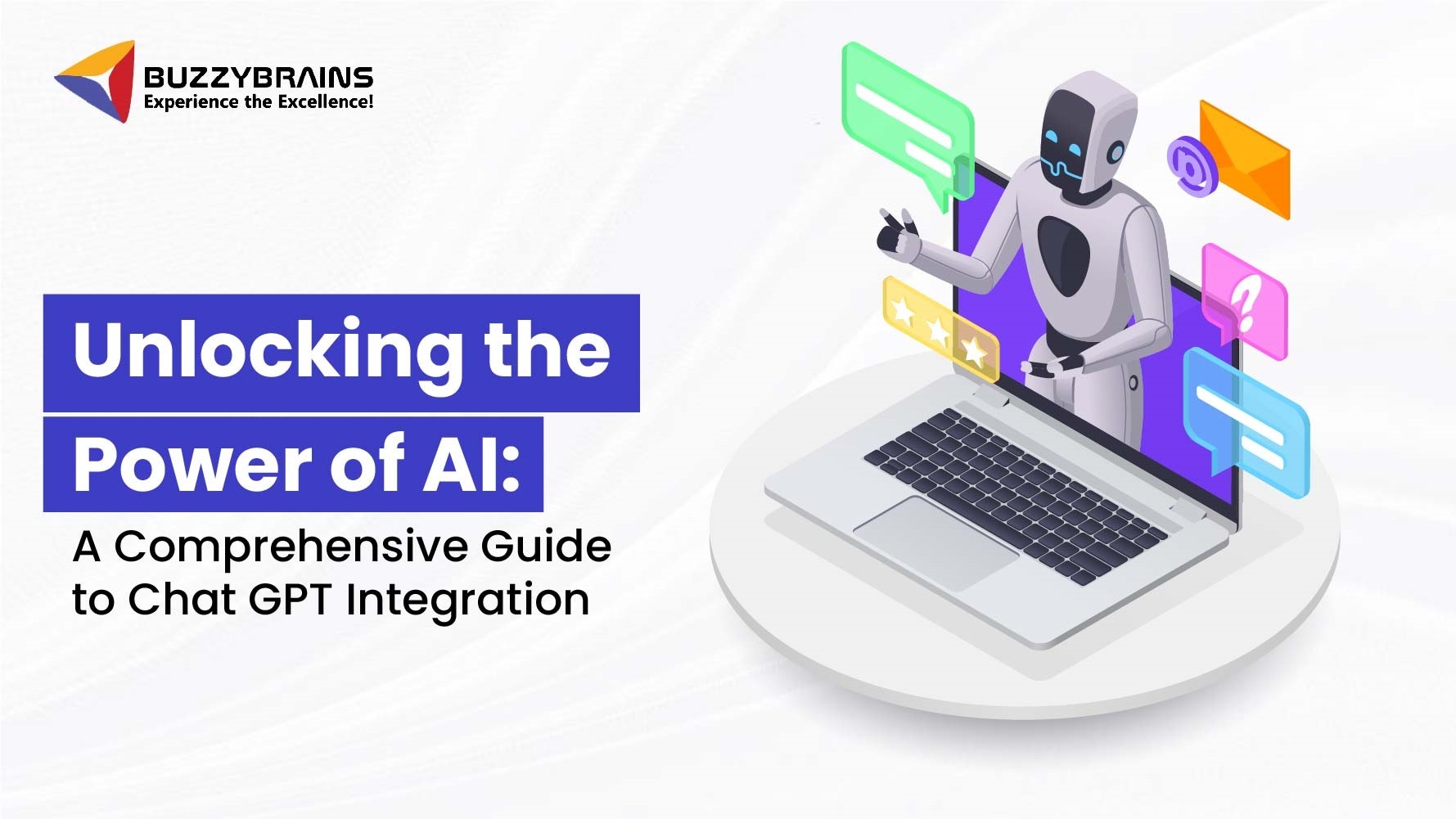Unlocking the Power of AI: A Comprehensive Guide to ChatGPT Integration

Artificial Intelligence (AI) has become a transformative force across diverse industries, reshaping processes and fostering innovation. This blog delves into ChatGPT, a groundbreaking language model by OpenAI, exploring its integration possibilities, functionalities, and real-world applications.
Understanding ChatGPT
ChatGPT, based on the GPT-3 architecture, stands as a pinnacle in language models, excelling in understanding and generating human-like text. Its applications extend to various conversational AI scenarios.
Operating on a transformer-based architecture, ChatGPT uses attention mechanisms for parallel data processing. Predicting the next word in a sequence enables coherent text generation, making it a potent tool for natural language processing.
Key Features and Capabilities
ChatGPT adapts to diverse tasks, from answering queries to creative content generation. It retains context during conversations, ensuring relevant responses. Trained on extensive datasets, ChatGPT showcases a profound understanding of various topics.
ChatGPT integration involves embedding the model into applications, websites, or platforms to enhance user interactions. This seamless incorporation empowers developers to provide dynamic and context-aware conversational experiences.
Diverse ChatGPT Integration Approaches
1. Chatbot Integration
Leverage ChatGPT as a conversational chatbot for seamless automated interactions. This integration ensures instant and personalized assistance, guiding users through queries with a responsive and engaging chat experience across diverse platforms.
2. Content Generation
Efficiently create personalized narratives by utilizing ChatGPT for content generation. Offering prompts results in coherent and contextually relevant content, particularly valuable in marketing. ChatGPT streamlines content creation, ensuring alignment with brand style and tone.
3. Virtual Assistants
Integrate ChatGPT into virtual assistants for intuitive, human-like interactions. This elevates user experiences, allowing virtual assistants to interpret and respond to queries with natural language understanding.
4. E-learning Enhancement
Transform e-learning platforms with ChatGPT-powered chat interfaces, fostering interactive and responsive learning environments. This integration creates dynamic conversations, enabling learners to ask questions and receive instant responses.
Benefits of ChatGPT Integration
1. Heightened User Engagement
Dynamic and context-aware interactions, facilitated by ChatGPT, go beyond merely capturing user attention; they actively elevate the overall user experience. By comprehending and responding to user queries in real-time, ChatGPT ensures that conversations evolve organically, delivering information tailored to users’ specific needs.
2. Efficient Customer Support
ChatGPT’s proficiency in providing automated responses significantly streamlines customer service processes. Swiftly addressing frequently asked questions, resolving common issues, and guiding users through standard procedures, ChatGPT enhances efficiency and reduces response times.
3. Personalized Content Creation
Leveraging ChatGPT for content creation introduces a personalized touch to narratives. Understanding user preferences, the model tailors content accordingly. This personalization extends beyond generic messages, crafting content that resonates on an individual level.
4. Time and Cost Savings
The automation capabilities of ChatGPT contribute significantly to time and cost savings. By seamlessly handling routine tasks, ChatGPT enhances operational efficiency, reducing labor costs.
5. Increased Productivity
Allowing ChatGPT to manage repetitive queries empowers employees to redirect their focus toward more complex and strategic tasks. This not only boosts individual productivity but also contributes to overall organizational efficiency.
Preparing for ChatGPT Integration
- Define Objectives: Clearly articulate integration goals to guide the process and align ChatGPT’s capabilities with specific organizational or project needs.
- Data Preparation: Ensure training data matches integration goals, refining datasets to enhance ChatGPT’s understanding and responsiveness to intended queries.
- Model Fine-Tuning: Customize ChatGPT to specific applications by adjusting parameters, improving relevancy, and tailoring responses for enhanced contextual understanding.
- Resource Allocation: Assign ample computational resources to support seamless integration, ensuring optimal performance and responsiveness in real-world applications.
- Testing and Validation: Conduct thorough testing to validate ChatGPT’s performance, identifying potential issues and ensuring it meets predefined integration objectives effectively and reliably.
Step-by-Step Guide to ChatGPT Integration
1. Define Integration Objectives: Clearly articulate integration goals, specifying the purpose and expected outcomes, ensuring alignment with organizational objectives, and defining the scope of ChatGPT integration.
2. Data Preparation: Curate and preprocess relevant training data to enrich ChatGPT’s understanding, ensuring the model is well-informed with accurate and contextually rich information.
3. Model Selection: Choose the appropriate ChatGPT variant based on unique requirements, considering factors like model size, language capabilities, and computational resources for optimal integration success.
4. Fine-Tuning: Customize the model for specific use cases by adjusting parameters and training on task-specific data, refining ChatGPT’s responses to intricacies associated with the intended application.
5. Integration Implementation: Seamlessly incorporate ChatGPT into the desired platform, ensuring compatibility for smooth interaction between the model and the existing infrastructure of the application or system.
6. Testing: Conduct comprehensive testing to validate ChatGPT’s performance, assessing its ability to generate accurate and contextually relevant responses across diverse scenarios and inputs.
7. Deployment: Roll out the integrated solution for real-world use, ensuring ChatGPT operates effectively and reliably in the intended environment, delivering the intended value to end-users or customers.
FAQs
Q1. Is a development team necessary for integration?
Yes, a skilled team is recommended, but user-friendly interfaces and documentation ease integration.
Q2. What are the technical requirements for hosting ChatGPT?
Requirements include computational resources, API access, and compatible integration frameworks.
Q3. Difference between chatbots and live chat for integration?
Chatbots automate, while live chat involves real-time interactions, often with human intervention.
Q4. Can I customize the chat interface with ChatGPT?
Yes, customization options allow alignment with branding and user experience preferences.
Conclusion
ChatGPT integration opens new possibilities for AI-driven interactions. Its versatility, coupled with ease of integration, makes it a formidable tool for developers and businesses seeking enhanced user experiences and streamlined processes.
Get Ahead with BuzzyBrains: Simplifying ChatGPT Integration
Explore effortless ChatGPT integration with BuzzyBrains. Our solutions empower businesses to leverage AI seamlessly, transforming interactions and driving innovation in the digital landscape. Stay ahead with BuzzyBrains and unlock the power of ChatGPT integration effortlessly.
